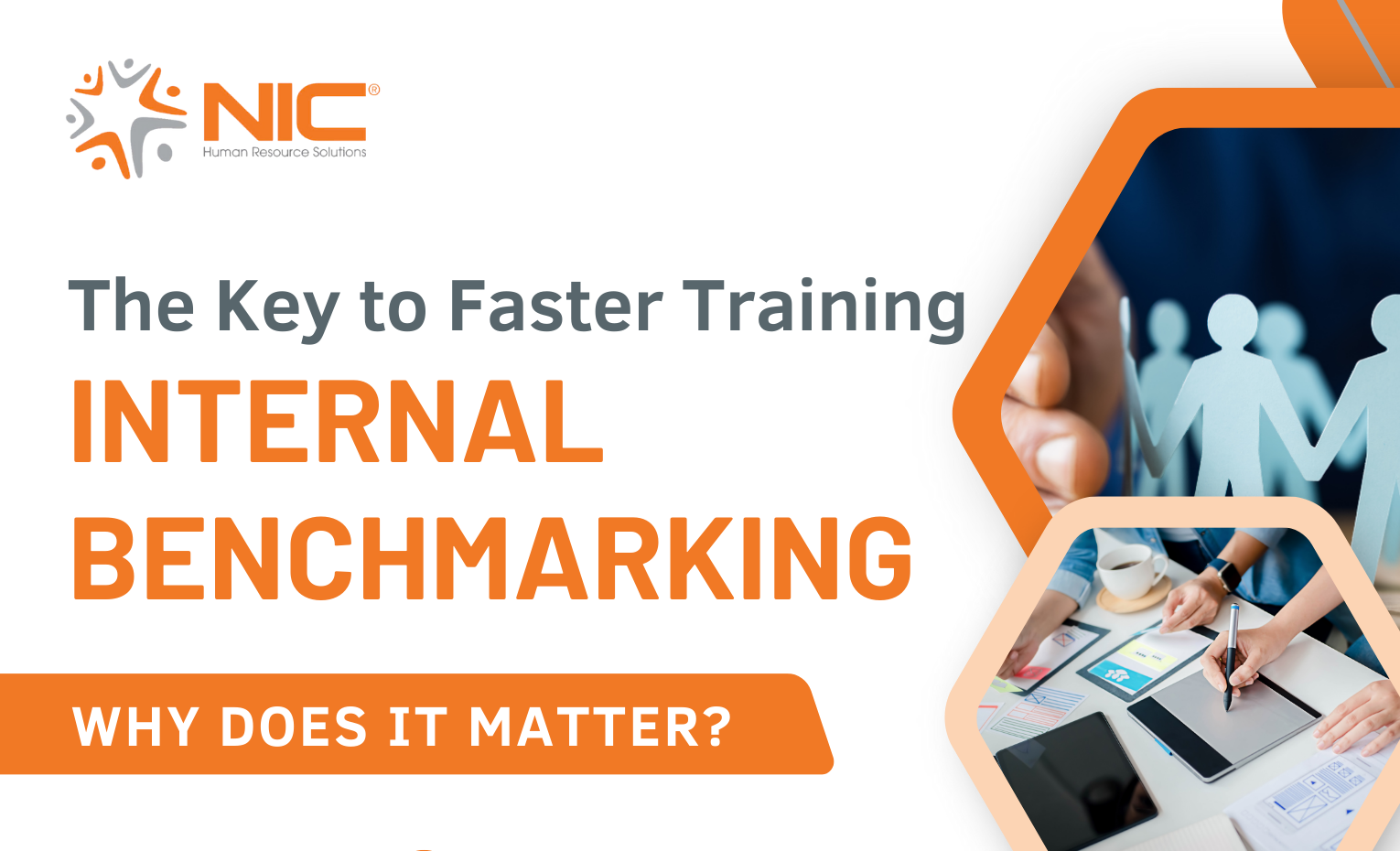Boost Training Efficiency with Internal HR Benchmarking Strategies
12/11/2024
Training efficiency isn’t just about comparing your results to industry standards. Sometimes, the best solutions are found within your own company. Internal HR benchmarking can uncover hidden strengths and strategies that help businesses close skill gaps faster and optimize training resources.

What is Internal HR Benchmarking and Why Does It Matter?

Internal HR benchmarking involves comparing your HR performance metrics across different functions, teams, or departments within your organization. It provides a data-driven foundation for identifying best practices that can be replicated across the enterprise.
One critical measure that can benefit from internal benchmarking is the average time it takes to close a skills gap through training. According to recent data, organizations at the median take around 20 days to close a skills gap, while top performers (at the 25th percentile) do so in 10 days or fewer. Meanwhile, those lagging can take 36 days or more.
This measure isn’t just about training speed—it reflects your organization’s ability to adapt to changing business conditions, seize new opportunities, and remain competitive. Closing skills gaps efficiently can give you a critical edge in today’s fast-evolving market
The Stakes: Why Closing Skills Gaps Matters
In today’s business world, the ability to close skills gaps quickly is essential. Emerging technologies like AI have made upskilling and reskilling more urgent than ever. If your training processes are slow or inefficient, you risk falling behind competitors who can equip their workforce with new skills faster.
Moreover, longer training cycles can signal bottlenecks in your processes, whether due to administrative delays, budget approval issues, or inefficiencies in how training is delivered. These inefficiencies can increase costs, reduce productivity, and even affect your bottom line by forcing you to hire temporary workers to cover skill gaps.
While technical skills naturally take longer to impart than simpler tasks, excessive delays in training can indicate deeper problems. To maintain a competitive edge, it’s crucial to continuously assess and optimize how quickly you can close skills gaps through training.

How to Leverage Internal HR Benchmarking
When using internal HR benchmarking to improve training efficiency, it’s important to focus on high-impact skills that are critical to your business. For instance, if your company runs a chain of coffee shops, closing skills gaps in barista training will likely have a far greater impact on your overall performance than in less central areas.
Here’s how you can leverage internal benchmarking for better training outcomes:
- Identify Business-Critical Skills: Start by identifying the key skills that are most important to your organization’s success. Focus your internal benchmarking efforts on these areas to see where improvements can be made.
- Compare Performance Across Teams: Look for disparities between how different teams or departments are closing skills gaps. Some functions may be completing training more efficiently than others. Learn from those top-performing areas and apply their strategies more broadly.
- Evaluate Bottlenecks: Use benchmarking to identify inefficiencies. Are there delays in training requests, budget approvals, or vendor procurement? Addressing these bottlenecks can significantly speed up the process.
- Consider Alternatives to Training: In some cases, formal training might not be the best solution. Mentoring, job rotation, or on-the-job learning may be more efficient ways to close certain skills gaps.
- Prioritize Training Improvements: Don’t try to optimize all training at once. Instead, focus on business-critical areas where improvement will have the most immediate impact. Set clear criteria for prioritizing which areas need attention first.
- Standardize Where Possible: Standardizing training programs can greatly improve efficiency. Rather than delivering ad-hoc or one-off sessions, create scalable training solutions that can be applied across multiple teams or functions.

Contextualizing Benchmarking Results for Leadership
When presenting benchmarking data to company leaders, it’s crucial to provide a broader context around the results. Explain the skills gaps you’re working to close, the resources available for learning and development, and how much time employees have for training.
To give a complete picture, track internal benchmarking results alongside other measures, such as:
- Learning assessments
- Pre- and post-training surveys
- Employee and manager satisfaction with training
- Cost of training programs (especially with external vendors)
This approach ensures that while optimizing for efficiency, you do not sacrifice other priorities like training quality or cost-effectiveness.
Strategies for Closing Skills Gaps Faster
If internal benchmarking reveals that training is taking longer than expected, these strategies can help boost efficiency:
- Learn from Top Performers: Use benchmarking to identify which teams or departments are closing skills gaps more efficiently and replicate their best practices.
- Streamline Processes: Address administrative bottlenecks that slow down the training process, such as delays in budget approvals or procurement.
- Consider Alternative Learning Methods: For certain skills, mentoring or on-the-job learning may be more effective and faster than traditional training programs.
- Standardize and Scale: Where possible, standardize training to create scalable, repeatable processes that can be applied across your organization.

Key Takeaways
External benchmarking is valuable, but internal HR benchmarking is equally important for improving training efficiency. By comparing performance across teams and departments, you can uncover hidden best practices and accelerate the closing of critical skills gaps.
Set a baseline for how long it takes to close skills gaps in your organization and track performance over time. By focusing on the most business-critical skills and addressing bottlenecks in your training process, you can optimize efficiency and better position your organization for success in a rapidly changing business environment.
For contact and support:
Facebook: NIC Global – Human Resource Solutions
Linkedin: NIC Global Sourcing JSC
Website: www.nicvn.com
Email: info@nicvn.com
Hotline: 0981.23.43.76
Address:
- Hanoi Office: No. 3A Thi Sach, Pham Dinh Ho Ward, Hai Ba Trung District, Hanoi, Vietnam
- Ho Chi Minh City Office: Dakao Center Building, 35 Mac Dinh Chi, District 1, Ho Chi Minh City, Vietnam
See more:
Payroll service
Staffing service
EOR service





